SailPoint Identity Traits & Lifecycle Management Training Tutorial
SailPoint Data Security
As a safeguard for data security, SailPoint is a solution that protects a company’s identity, not just an access control system.
When SailPoint is well-configured, it provides a secure environment and is typically less complex to maintain compliance.
The coming chapters are to be filled with something more complicated, for example, receiving information from source points to destination points.
SailPoint’s strong architecture enables companies to perform such standard operations automatically, which is user-friendly for both IT administrators and security officers.
Be sure to follow up on the subsequent discussion, where we will discuss entitlement mapping and extended property accessors in a manner that prioritises SailPoint’s functionality.
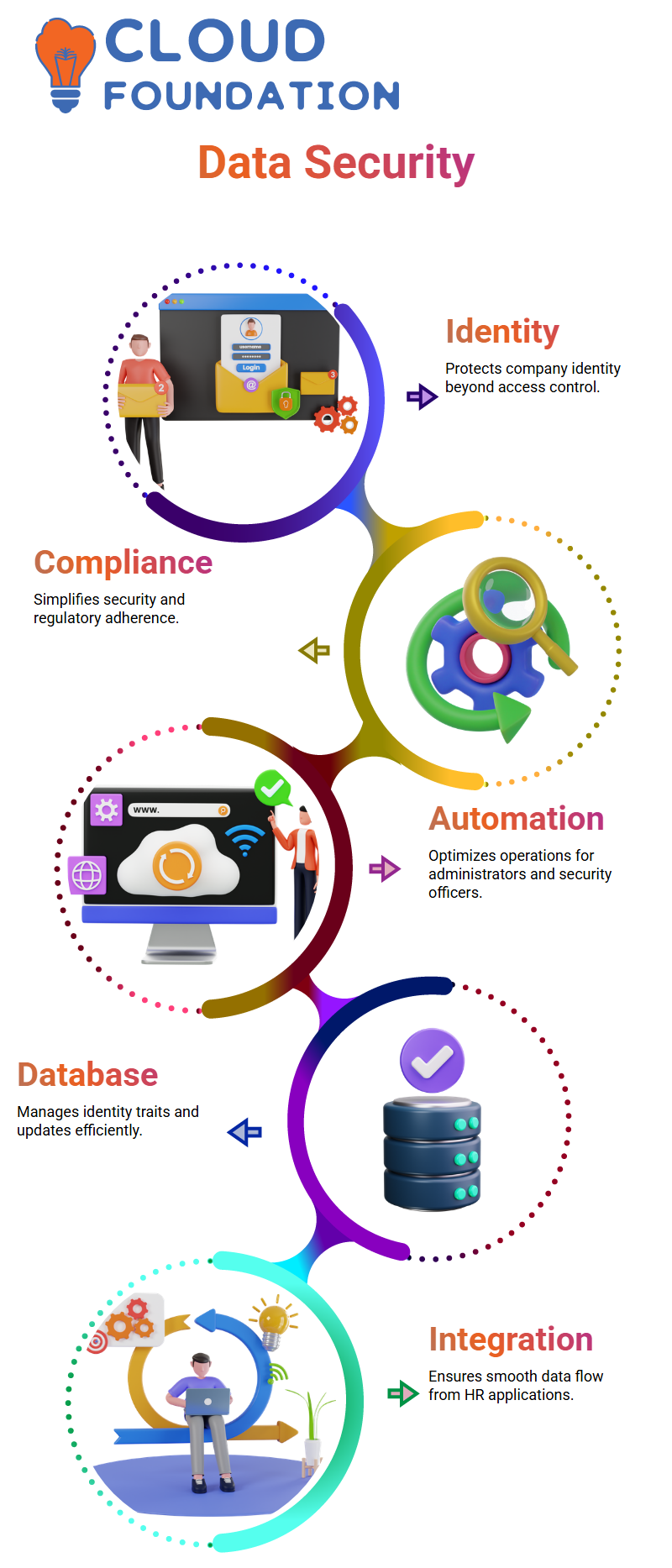
SailPoint Database Configuration
To add traits in the SailPoint database, start by opening MySQL Workbench.
In the absence of a dedicated database team, SailPoint administrators must manage database revisions themselves.
Converting columns from one format to another involves executing the SQL queries generated by the SailPoint modules.
Once the elements are added, the indices need to be defined.
The department provides details about identities in SailPoint databases and updates them constantly during the aggregation process.
To keep the identity management process running smoothly, it is essential to ensure that data from HR applications is correctly integrated into SailPoint’s identity warehouse.
SailPoint Attribute Integration with Databases
Once attribute creation starts, the process integrates the data into the database, as well as Identity-related qualities in SailPoint, which in turn should have corresponding entries in the database tables.
This would sanction the easy extraction and updates, thus strengthening the identity management process.
In general, the database team implements this process, thereby ensuring that the indexes and columns align with the system’s necessities.
When checked, these values become the universally held settings by SailPoint that modify the whole system.
Depending on whether it is a single-value or multi-value type of detail, users need to formulate indexes to increase their data retrieval speed and enhance the overall system’s efficiency.
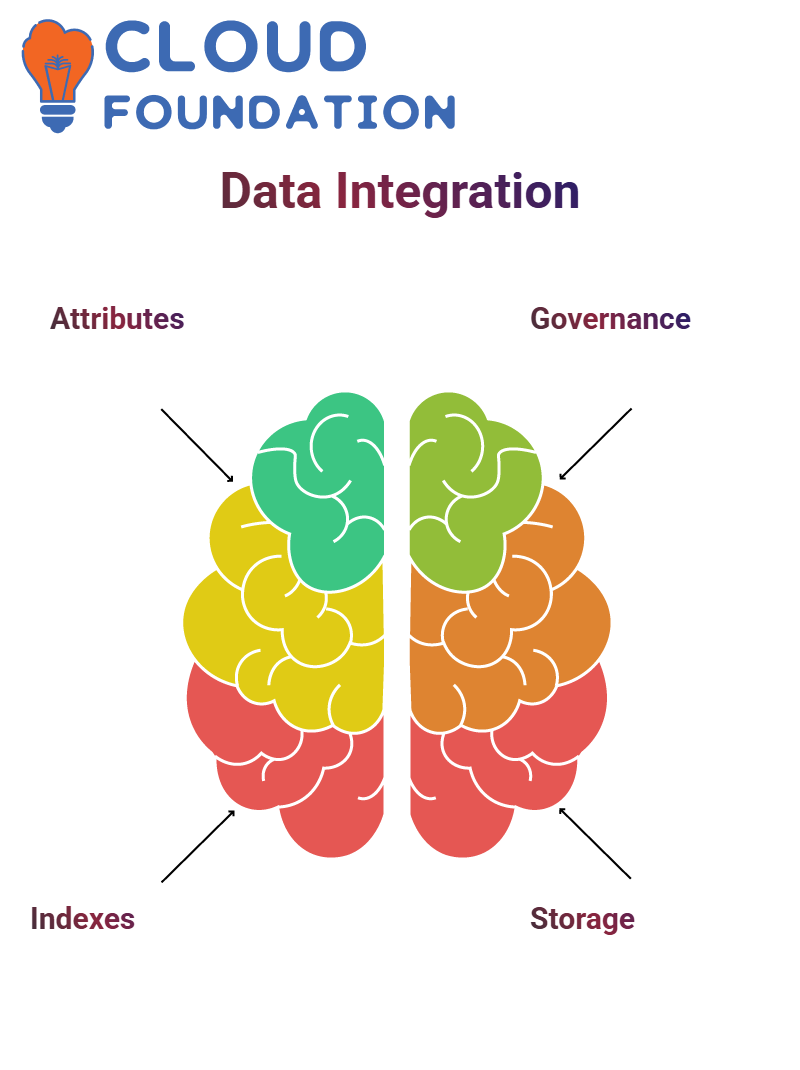
SailPoint Traits
SailPoint is where elements that are vital to identity governance are presented. If you’ve ever wondered about SailPoint and its features, and wanted to know how they work and why they’re important, you’ve come to the right place!
As a deeply integrated part of SailPoint, these make up a storage unit in which the most essential details about identities, applications, and policies are kept up to date. Although some characteristics are predefined (e.g., username, first name, email), others must be modified, such as employee ID, department, and location.
SailPoint Trait Management
There is no doubt that SailPoint leads the way in identity and access management, ensuring the smooth operation of the entire process.
The most imperative part is how easily we extract the data from Workday that updates identity traits when we run an aggregation in SailPoint.
As variations in an applicant’s status or the user’s employment occur, the identity remains the same.

These circumstances do not render the entity invisible; they come about, and those are the qualities that have been and still can be used to conduct access. SailPoint not only identifies and resolves issues but also automates the majority of the process.
Did we miss a point? Are the data safe and sound? These are the questions we must ask ourselves.
A critical stage is to ensure that the extended property accessor is not faulty, regardless of whether the number of features is less than 20 or above that mark, as doing so will always prevent the return of a null pointer exception.
It is indeed a minor, albeit a critical determinant. Without it, SailPoint will uselessly seek identity management.
SailPoint Data Indexing
Indexed elements increase the speed at which identity details are retrieved, thereby facilitating smoother identity tracking.
The businesses that work with SailPoint are those that utilise search characteristics to administer their identity data effectively. Indexing reconfirms that when identities are refreshed, facts will be retrieved quickly.
SailPoint Indexing for Faster Data Retrieval
Indexes within SailPoint facilitate quick knowledge retrieval.
An index such as this is a piece of a database that, when data is extracted, establishes a smooth process of gaining entry.
It also helps significantly in the user interface, where quick access to data is required for any operation.
It is essential to determine whether an index is mandatory, taking into account the business’s priorities.
For speed and efficacy, if there is a need to recognise someone’s identity status, identity type, and department, creating the indexes will indeed have the most significant impact on SailPoint’s performance.
Why is Indexing Very Important in SailPoint?
SailPoint is the key for businesses to have a seamless process for managing identity features.
Companies need to create an index as they store atomic identity news, which facilitates the convenient retrieval of this stored data.
For example, if somebody is extracting identity details through SQL queries, the competence of indexing is another significant aspect of the process’s rationalisation.
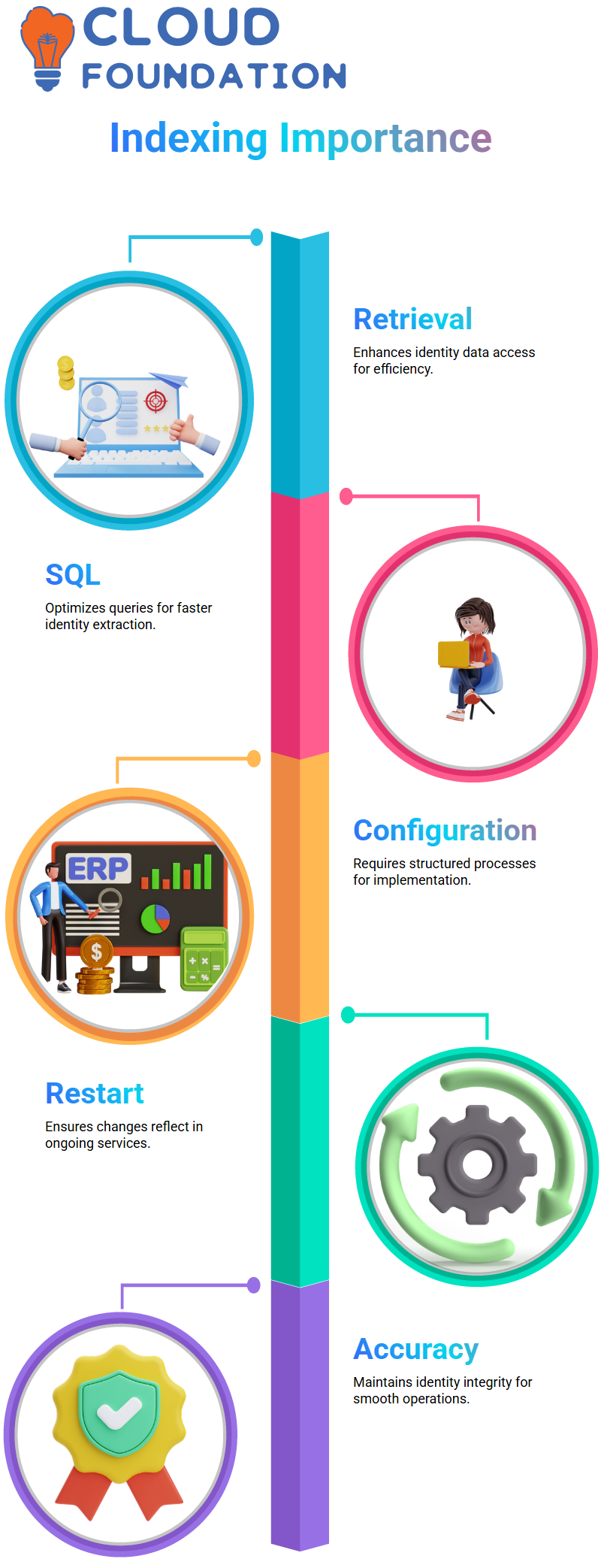
Deploying Configuration Alterations in SailPoint
SailPoint variations must be implemented according to specific procedures, and it is essential to perform the restart process so that the changes are reflected throughout the ongoing services.
The care of the business regarding the identity qualities is required for SailPoint to function successfully. Thus, business entities must ensure that all identity elements are in order.
Active Directory in SailPoint
One of the key characteristics of the SailPoint integration is that SailPoint is empowered to operate the user-access identification process.
If an employee quits their job, SailPoint will ensure that access to the central system remains reliable.
The user of SailPoint is a person within the organisation who can assign various details to an employee. The employee is then facilitated to log in comfortably to the system.
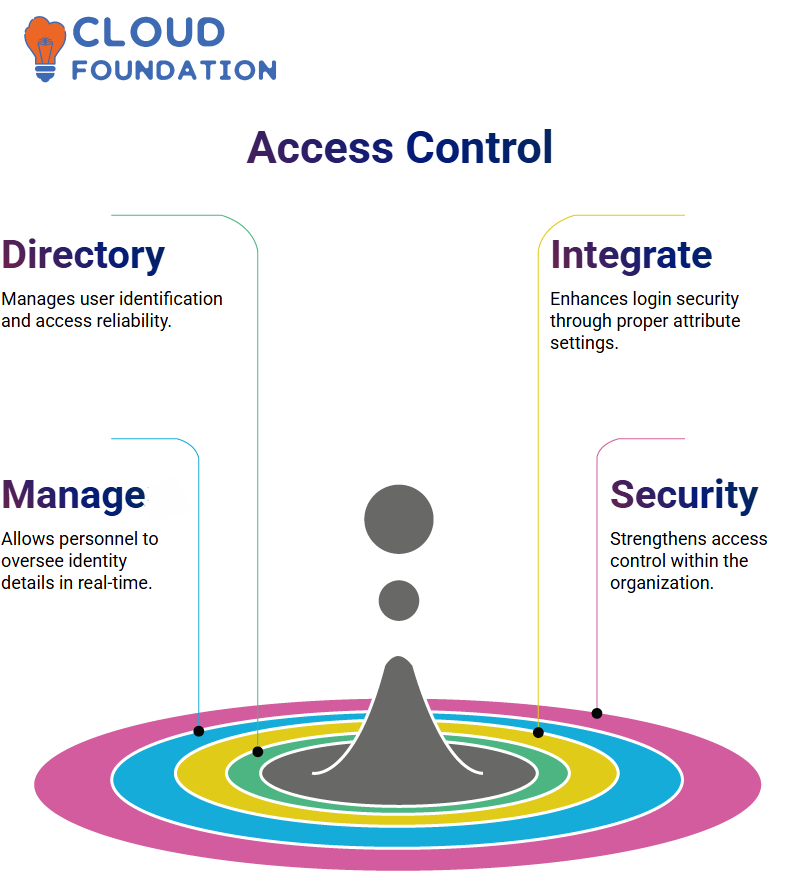
Properties Management in SailPoint
The SailPoint framework is structured in a way that all identities are readily available for search and access to users.
The reliance on the correct attribute configuration enables the organisations to perform the authentication process much faster.
One of the things companies must do is equip their assigned personnel to manage details in real-time, enabling the development of an organisation’s security and access control.
Benchmark methods for SailPoint Properties
To be successful in creating features, you must follow the three most essential steps in SailPoint: first, update the Hibernate file; second, integrate attribute columns into a database; and finally, assemble the features in the general settings.
If you follow these steps, the execution will be smooth and prevent capacity errors.
You must always collect the obligatory mandates from stakeholders before providing details about your modifications.
Also, ensure that database permissions are correctly set before creating the attribute.
Identity Management in SailPoint
In the identity management genre, SailPoint is a leader in certifying data reachability and security.
Businesses must follow a well-organised method for identifying assets and elements through an identity management system to access knowledge.
Should you need quick insight retrieval, indexes can be significant.
The definitions and elements of SailPoint enable the fastest data retrieval, allowing customers to avoid complex issues and retrieve their desired data with ease.
Identity Qualities in SailPoint
Identity features addition in SailPoint is a procedural thing. The correct identification of users and the settlement of identity values are interrelated.
If SailPoint needs to be configured in a particular way, it is necessary to use specific settings and also follow the alphabetical process to ensure guaranteed admission.

Managing Identity Lifecycle with SailPoint
Identity lifecycle management in SailPoint ensures that users receive the proper access.
For example, when an employee is fired, their identity status becomes inactive, but related qualities are still retained in the SailPoint system.
There is a way to smooth identity transformations without blocking user access if you adhere to the optimal methods.
SailPoint Identity Lifecycle
Each application has its life cycle, and managing identities involves more than just activating and deactivating accounts.
In SailPoint, there are circumstances where a worker’s access must be revoked after they have departed from the company.
During a specific period, the identity should be erased to the point that it cannot be entered anymore.
SailPoint’s Real Identity Cube task accomplishes the procedure. SailPoint has noticed that the identity does not have accounts with any application. Therefore, the system schedules the identity for deletion as soon as no application has access to it.
The system automatically deletes it shortly after access from all applications has been withdrawn, along with the log records.
As it stands, SailPoint is also able to connect with Workday, making account deactivation a less complicated procedure.
As Workday assigns a last day of work to an employee, SailPoint recognises this and activates the procedure of ending access.
This way, the company is confident that all policies are being adhered to and that the system operates safely without requiring manual intervention.
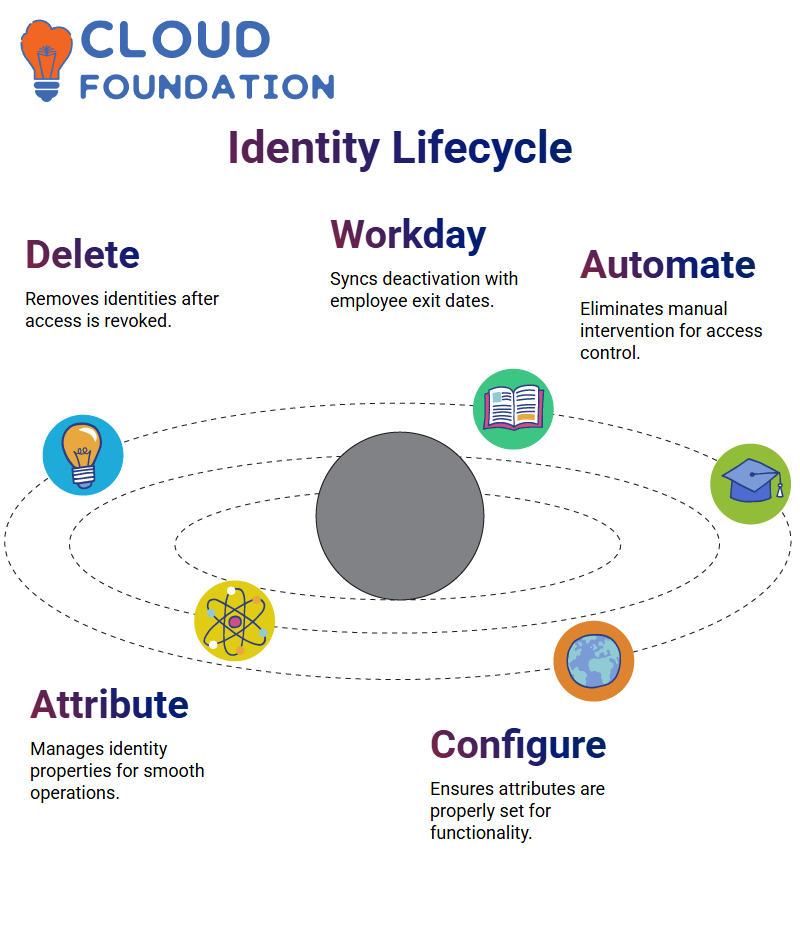
SailPoint Identity Properties
When you work with SailPoint, the capable management of identity features is precisely what confirms an excellent user experience. A key part is to check whether the user is active or inactive.
In this case, if a checkbox is not visible, it means the user is inactive.
Although the configuration displays the attribute as Boolean, we still need to declare it as a string.
Establishing a new attribute is decisive in SailPoint. By default, 10 characteristics are allowed; however, the number can be increased to 20.
If you need more, things will be okay in the case of the extended property accessor, provided it is correctly configured; otherwise, the SailPoint applications become unreachable. Am I on the right pathway?
Creating Extended Features in SailPoint
It’s not uncommon for stakeholders to have requests for a broader array of traits than those provided by default varieties.
SailPoint grants users the ability to describe extended characteristics on a variety of identity objects. This ensures that data of any kind is available online at any time the business needs it.
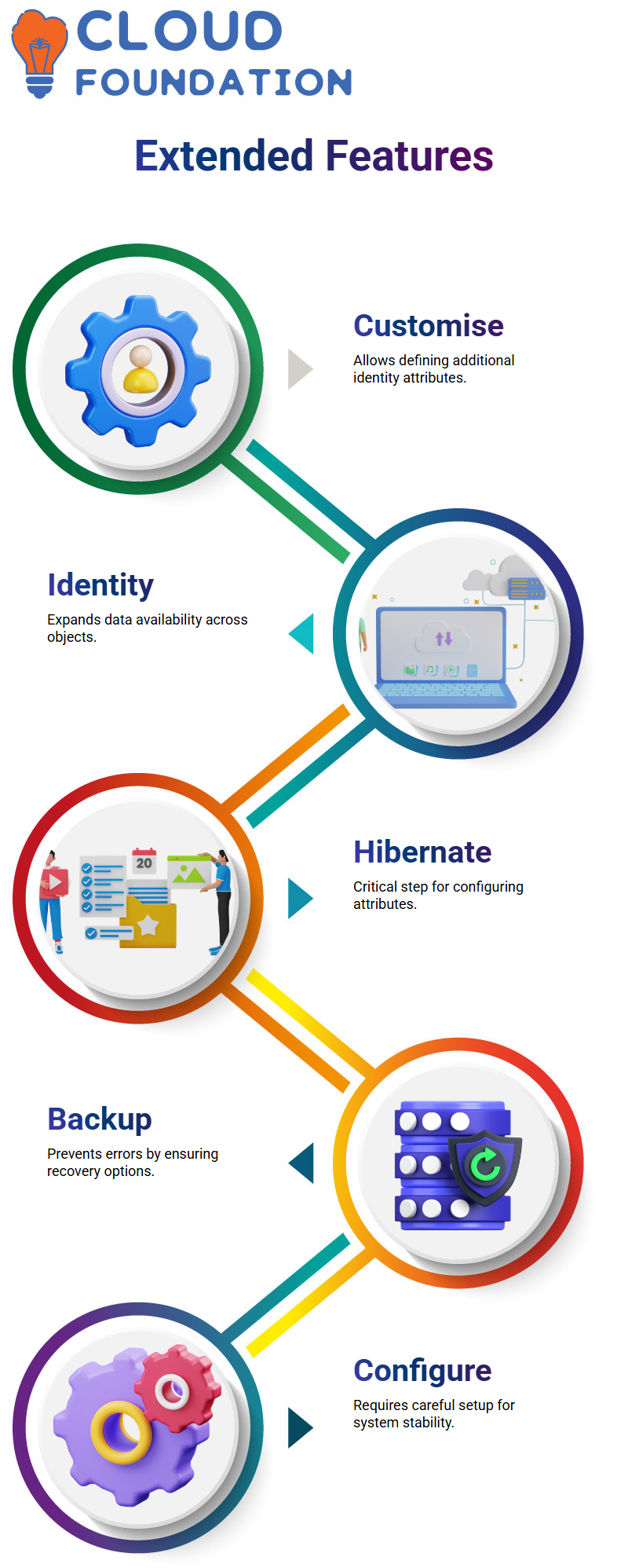
To invent an extended attribute, go to the SailPoint application server and locate the Hibernate file.
This is the first and most crucial step, as changing an incorrect Hibernate file can cause the production environment to stop, and therefore, always have a backup at your disposal.
Categories of Features in SailPoint
The attribute in SailPoint can be associated with various objects, including identities, applications, roles, entitlements, and certifications.
Assuming that these are predefined or extended qualities, knowledge of their purpose is key to maintaining structured identity data.
For example, an attribute such as identity status can have values like active or inactive users, whereas the application attribute can be configured by the admin who is the custodian. These details enable companies to inspect and verify identity information in SailPoint efficiently.
SailPoint Features
During aggregation, SailPoint’s history shows that identity traits have been updated.
From the system’s list of built-in properties, customers can also add custom elements, which must be configured for use, such as prototypes. These departments require storage for improved result reporting and user access.
The data retrieval speed on the SailPoint dashboard requires users to work with indexed features.

Navya Chandrika
Author



